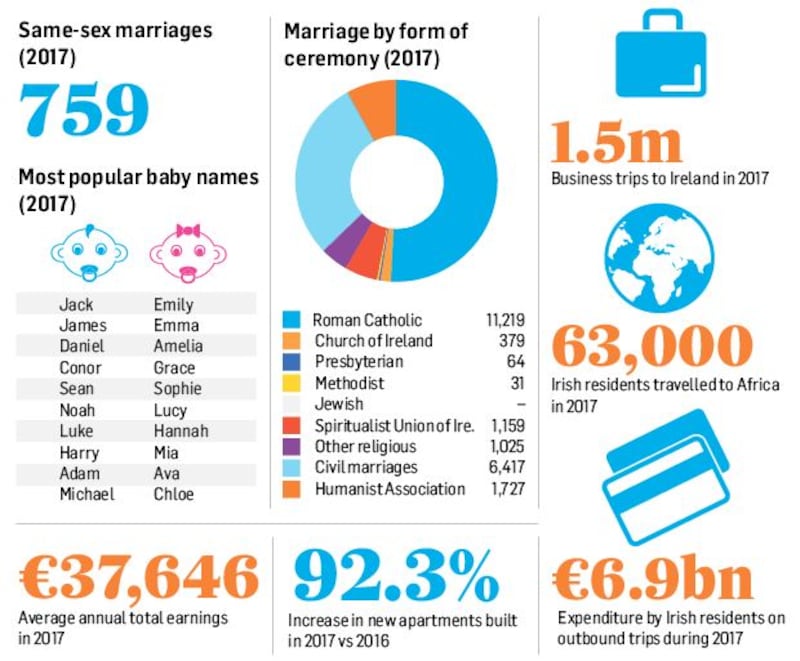The full extent of Ireland's exposure to Brexit is set out in the Central Statistics Office (CSO) 2018 Yearbook, which pulls together key headline figures from across Irish society and its economic activity.
It shows that the UK is the Republic’s largest EU trading partner, accounting for €16.4 billion of goods exports last year and as a destination for Irish exports it is eclipsed only by the US.
The figures also show the UK is the single largest supplier of Irish imports, acccounting for 22 per cent or €17.5 billion of all goods imported here in 2017.
With close trading links to Britain and a shared land border, Ireland is widely acknowledged as the EU member most at risk after Brexit.
The imposition of tariffs and non-tariff barriers such as border checks, in the event of a no-deal or disorderly Brexit, has the potential to seriously disrupt this trade.
Social ties
Apart from trade, Ireland’s social ties to the UK are clearly demonstrated by the CSO figures.
London-Heathrow was the most popular destination both to and from Ireland’s four main airports. Almost 2.5 million people used this route last year.
In that time, those travelling between here and the UK represented 37.5 per cent of all passengers (12.8 million) on international flights.
While much focus in the travel industry has been on a reduction in UK visitors due to the currency exchange, 2017 still saw 3.7 million trips here. That was a decline of about 5 per cent, or 195,000 journeys.
Nonetheless, the UK still accounted for about 40 per cent of incoming visits to Ireland last year.


In Northern Ireland, residents made almost 1.3 million overnight trips south of the Border last year, a 3 per cent reduction on 2016, and the lowest level since 2012.
The CSO’s figures also reveal just how concentrated Ireland’s export sector is around big multinationals with just 50 large firms accounting for three-quarters of Irish goods exports, equating to nearly €88 billion annually in 2016.
The top five highest-value exporters accounted for more than €36 billion or 31 per cent of all exports, the figures showed.
Corporation tax
Much of the State's current coporation tax windfall comes from the high-value export sector, understood to include tech giants Apple, Microsoft, Dell, Google and Oracle.
The Government has been warned repeatedly not to rely on current corporate tax growth to fund permanent spending measures given the increasingly uncertain outlook internationally.
The CSO data also revealed average earnings across the Irish economy in 2017 was €37,646, albeit this figure takes part-time earnings into account. Average annual total earnings were found to vary widely with the highest averages in information and communication, which includes the State’s fast growing IT sector, at €56,757 and financial, insurance and real estate at €55,634.
The accommodation and food services sector had average annual total earnings of €17,607, the lowest of all the sectors covered.












